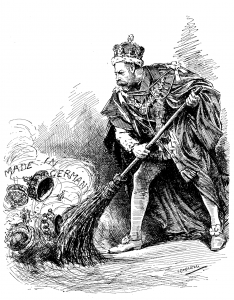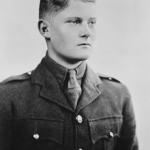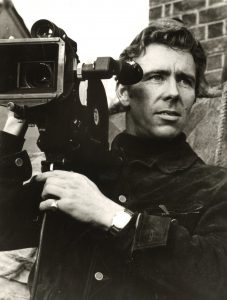The birth of Queen Elizabeth II’s eighth great-grandchild – the first child of HRH Prince Harry, Duke of Sussex,[1] and the former Meghan Markle – offers a 2019 gloss on names and titles in the British royal family.
During the First World War, the rulers of Germany and Great Britain were first cousins – and King George V of Great Britain had no agreed-upon surname. Whatever the family name was, it was German. This situation led to a wholesale renaming of the royal family (as the House of Windsor) and the ceding of assorted German titles for equivalents in the British peerage system.
Another feature of this period, one relatively remote in time from King George V and the new House of Windsor, was handling the status of junior members of the family. In 1917, Queen Victoria – dead since 1901 – had exactly one great-grandchild who was the son of a son of one of her younger sons. (All the others had succeeded to other situations at home or abroad.) HH Prince Alastair of Connaught[2] – the son and heir of HRH Prince Arthur of Connaught, the son and heir of Queen Victoria’s third son HRH The Prince Arthur, Duke of Connaught[3] – would now represent the new paradigm: he would lose his status as a Prince of the United Kingdom and be treated as the child of a (non-royal) Duke. Prince Alastair’s children, in the future, would be Mr. or Miss Windsor.
As it happens, Prince Alastair’s mother was HH Princess Alexandra, Duchess of Fife in her own right (and a granddaughter maternally of King Edward VII),[4] so Alastair took her second title as Earl of Macduff. In 1942 he succeeded his grandfather as Duke of Connaught, but died before his mother – so Connaught became extinct and Fife passed to his first cousin.
*
Until the early 1960s, royal options for renouncing hereditary status were limited. King Edward VIII abdicated in 1936 – a jarring scandal whose ramifications are still felt – while HRH Princess Patricia of Connaught, young Macduff’s aunt, gave up her royal rank on her marriage to the Hon. Alexander Ramsay in 1919. In the latter instance, the title and rank change – from Princess Patricia to Lady Patricia Ramsay, ranking before all Marchionesses – made the couple more equivalent socially, and as Lady Patricia was far down the line of succession, and her husband had his own status as an officer and the younger son of the Earl of Dalhousie, this was a common-sense approach to their situation.
By the late 1950s, hereditary titles in the British peerage – if by no means within the royal family – were sometimes felt to be onerous for their bearers; for ambitious politicians like the Earl of Home and Viscount Hailsham, who could not serve as Prime Minister from the House of Lords, the opportunity to renounce a title and reenter elective politics was a pressing concern. With the passage of the Peerage Act in 1963, Sir Alec Douglas-Home – who, like Hailsham, would later accept a life peerage and return to the Lords – was free to pursue political power.
When Princess Margaret married Antony Armstrong-Jones in 1960, he perforce accepted an earldom to give his wife and their children titles commensurate with their senior place in the royal family. Just over a decade later, Princess Anne (now the Princess Royal) made a different choice with her husband; he did not receive a title, and their children (and grandchildren) have no titles today – despite their proximity to the Queen.
If female members of the royal family have sometimes had an easier time tailoring their rank, the men – who receive titles on their marriages – are bound, however loosely, by the rules of the peerage system.
All of this is to say that the decision to style the newborn member of the House of Windsor – who before 1917 would have been regarded as a junior Prince of the United Kingdom of Great Britain and [Northern] Ireland, by courtesy called (after his father’s title) Prince of Sussex – as simply Archie Mountbatten-Windsor marks a new approach to hereditary status.
*
Even in 2019, without any intervention by Archie’s parents, he would be the Earl of Dumbarton – because, while the present Duke of Sussex will presumably ascend in the royal succession, making Archie the grandson rather than the great-grandson of the monarch, for now he falls under a different system: as we have seen, as the great-grandson in the male line of the Queen, following the 1917 rule change he enjoys the status of a non-royal Duke’s child. (As Archie has, from birth, his father’s second title as his own, he would normally use that status.)
So here we have a situation where Their Royal Highnesses the Duke and Duchess of Sussex pass along none of their rank to their infant. While in the short run the question is largely moot – Archie and his age cohort are some years from status concerns – in the longer run we can expect further jarring transitions: from Master Archie Mountbatten-Windsor to the Earl of Dumbarton to HRH Prince Archie of Sussex (as the Prince of Wales succeeds his mother). Ultimately, Archie will be either His Grace the Duke of Sussex (as the great-grandson of Queen Elizabeth II) or His Royal Highness the Duke of Sussex (as the grandson of the present Prince of Wales or the nephew of the present Duke of Cambridge).
It seems unlikely that Archie Mountbatten-Windsor’s proximity to the British royal family will ever be a secret from his peers, so why set up a situation where Archie is so very publicly unconnected to his parents, the Duke and Duchess of Sussex?
Notes
[1] His (or Her) Royal Highness, the style for a grandchild in the male line of a British sovereign.
[2] His (or Her) Highness, the style for a great-grandchild in the male line of a British sovereign.
[3] His Royal Highness, with the additional status marker of The Prince, the style for a male child of a British sovereign. The Prince Arthur was also the Duke of Strathearn.
[4] Born Lady Alexandra Duff, daughter of the 1st Duke of Fife and HRH The Princess Royal, she was created HH Princess Alexandra of Fife by her grandfather, King Edward VII, and succeeded her father as Duchess of Fife.
Share this:
About Scott C. Steward
Scott C. Steward has been NEHGS’ Editor-in-Chief since 2013. He is the author, co-author, or editor of genealogies of the Ayer, Le Roy, Lowell, Saltonstall, Thorndike, and Winthrop families. His articles have appeared in The New England Historical and Genealogical Register, NEXUS, New England Ancestors, American Ancestors, and The Pennsylvania Genealogical Magazine, and he has written book reviews for the Register, The New York Genealogical and Biographical Record, and the National Genealogical Society Quarterly.View all posts by Scott C. Steward →


